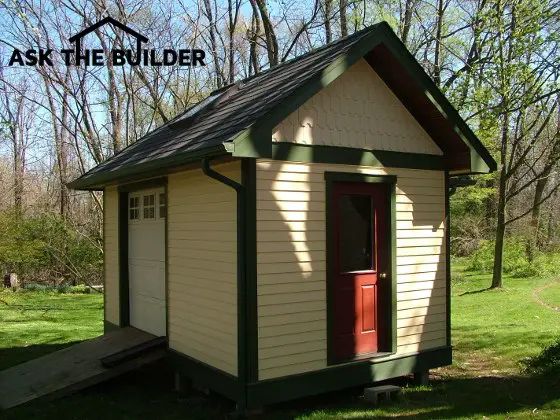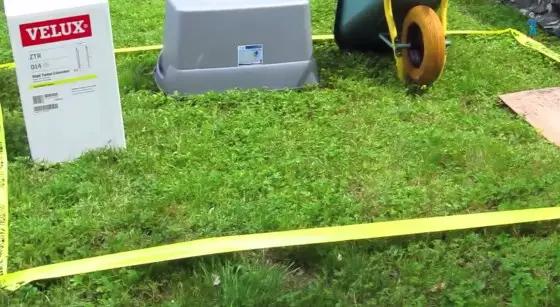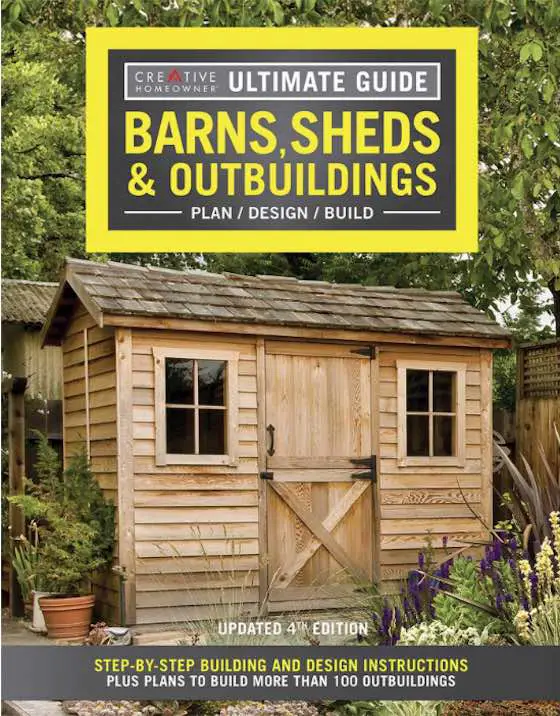How To Plan a Shed
How To Plan a Shed - Most Sheds are Too Small
- What shed size you need
- Determine what you will put in the shed
- Take shelves and hanging items into account
- Link to video
DEAR TIM: The official start of Spring is just days away. I’ve been putting it off for years, but I’m finally going to build an outdoor shed. My garage is so full of junk I long ago gave up parking my car in it. I see the pre-built sheds in the parking lots of the home centers and they seem ginormous. How do I go about determining the best size for my shed? I don’t want to go through all the trouble to only discover my shed is too small for my stuff. Ashley S., Kokomo, IN

I built this Queen Anne Victorian shed to match my home. It was a fun project. CLICK on the photo to see all sorts of wonderful shed plans!
DEAR ASHLEY: Your dilemma reminds me of the first video I ever shot in the field. While it wasn’t about building a shed, part of the video covered the common mistakes people make when planning or building a simple deck. Most sheds I see were doomed from the beginning because of the same mistakes. My non-scientific gut-feeling estimates are that ninety-five percent of all homeowner-designed decks and sheds are always too small.
CLICK or TAP HERE to get FREE BIDS from local shed builders.
In that video, I visited a few homes and showed how standard 4-foot-diameter round outdoor table and chair sets were very cramped on a common 10 x 12-foot deck. If you want enough room to walk around a table where people are relaxing on a deck, the deck needs to be at least 14 feet wide. Anything less than this and a person needs to scoot in to allow the person behind them easy passage along a railing or the back of the house.

Use your lawn and some string or caution tape to outline the perfect size for your new shed. Photo Credit: Tim Carter
I showed in the video how this could be avoided using graph paper and scale cutouts of the table and chairs. Over time, I’ve discovered many people can’t tackle this simple task and they give up trying to make a scale drawing of a deck with furniture on it.
Shed Planning Begins with Getting Rid of Junk
Start the process of building the perfect shed by getting rid of junk you don’t use. This can be hard. You can hire my son to help, as he’s an expert at making decisions about what and what doesn’t qualify as pack-rat material. In all seriousness, sell, donate or give away items you no longer use.
Once you have set aside all the things you’re keeping and will be housed in the shed, sort them. Put things in one group that can be put on shelves in the shed and larger items that will remain on the floor of the shed.
The things that will go up on shelves, put in a line next to one another and calculate the total cubic footage they need. You should discover just about everything will fit on a shelf that’s only 16 inches deep. You can convert the total cubic footage into the number of shelves you need with relative ease. I set of shelves 8 feet tall, 6-feet wide and 16 inches deep will hold about 42-45 cubic feet of items. Keep in mind, you need to account for unused air space on top of items when placed on a shelf.
This simple exercise will help you determine how many shelves you need in your shed. The lowest shelf needs to be high enough out of the way so things stored on the floor will be able to fit up against the wall. If you want the shelves to extend to the floor, then the front face of the shelves needs to be where you start to plan the minimum amount of floor space you need for your shed.
I’ve discovered a flat driveway apron or lawn area works really well to aid in planning the perfect amount of floor space for a shed. All you do is take the things you aren’t putting up on shelves and place them in a square or rectangle area on your lawn or drive apron as you might envision them stored in the shed.
If you don’t want to pull things in and out of the shed to get to other things, then arrange the lawnmowers, snowblowers, wheelbarrows, lawn tractors, plow blades, leaf shredders, etc. in such a way as you can move each thing without touching another implement.
What are the shelving requirements for the shed?
Once you have the items arranged, keeping in mind the shelving requirements, then take some string or long pieces of lumber and create an outline on the ground of what the walls would be like around this odd assortment of things on your grass. I believe you’ll be shocked to discover you might need a shed that’s 14 feet wide by 16 or 20 feet deep.
Don’t forget to account for needed wall space for shovels, rakes, hoes, or any other things you want to hang on the shed walls. I also recommend planning for a 5-foot wide workbench in the shed. You’ll discover his is a very handy thing to have when you need to work on a tool.
You can watch an informative video showing how to create the outline of a shed on a lawn. You’ll be shocked to discover the small 8-foot by 10-foot sheds sold at the home centers will hold very little. Don’t become a statistic. Build a shed that solves your problem. Watch this video now:
The important column was featured in the June 13, 2014 AsktheBuilder Weekend Warrior.
Column 1030

4 Responses to How To Plan a Shed